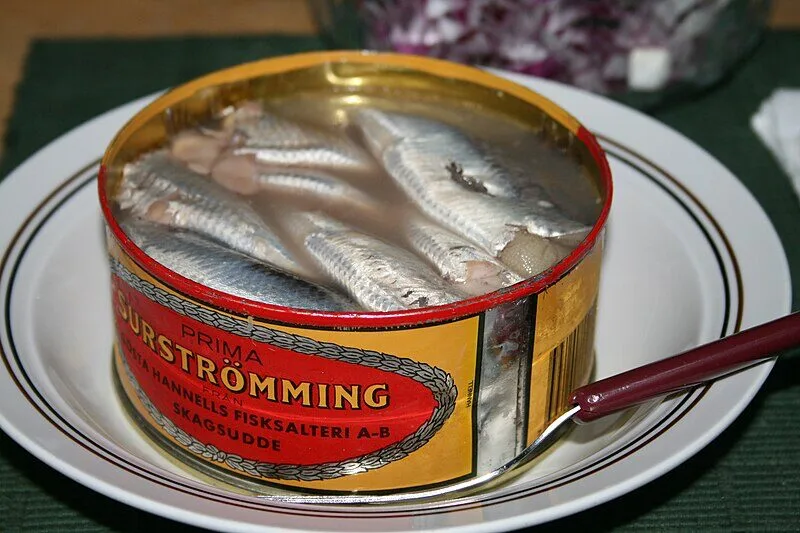There is widespread concern that mushrooms grown in the wild accumulate cadaveric poison from the bodies of animals decomposing in the forest. We figured out how reasonable it is.
Russians regularly write that forest mushrooms are dangerous because of the cadaveric poison they contain, with reference to scientists and doctors. federal And regional Russian-language media publications from others countries, bloggers and women's magazines. Similar materials can be found on websites relevant government agencies. Often the authors of such publications They call mushrooms a “natural vacuum cleaner” that literally pulls out a wide variety of substances from the soil. In other articles, on the contrary, it saysthat cadaveric poison does not accumulate in mushrooms, but is formed in them after collection, so they must be eaten on the first day.
Corpse poison is an outdated (but still used in everyday life) collective name for substances that are released as a result of putrefactive processes. A more correct term is ptomaines (from the Greek ptoma - “corpse”). When rotting, cadaverine and putrescine are released primarily, as well as spermidine, spermine, histamine, tyramine, beta-phenylethylamine and neurin.
The process of decomposition begins in the first minutes after death. The cadaveric changes that occur are usually divided into early and late. Early symptoms include drying out, cooling, rigor and the appearance of cadaveric spots. In parallel with these visible processes, cellular autolysis begins, that is, the self-dissolution of dead cells, and it is in the process of autolysis that ptomains begin to be produced. Already three hours after a person’s death in brain tissue present cadaverine and putrescine, however, their concentrations are low and an outside observer will not feel the characteristic putrefactive odor. After two or three days comes phase of late cadaveric changes (however, depending on environmental factors this can happen either earlier or later). The body swells due to the accumulation of putrefactive gases in the tissues (they are secreted by microorganisms, primarily in the intestines of the corpse), the skin color changes, and a characteristic odor appears. During active decomposition, the corpse is colonized by insects that contribute to the destruction of soft tissue. Then comes the skeletonization phase, which consists in the disintegration of the corpse into individual bones.
Depending on the environmental conditions, the decay phase may not occur or may not last long. So, dry and warm air combined with good ventilation promotes natural mummification. Corpses located in peat soil can be subjected to peat tanning, thanks to which the so-called swamp people - human remains that were discovered in bogs in northern Europe and whose skin and internal organs were well preserved. At high humidity and lack of oxygen (for example, when buried in wet clay soils), the decay processes quickly stop, and tissues and organs become saturated with water. As a result, adipose wax and saponification of the body occurs.
The vast majority of biogenic amines released during putrefactive processes are normally present in the body of a healthy person, and are also found in products of animal and even plant origin. Although many ptomains are indeed poisonous, their toxicity is extremely low.
Thus, cadaverine (as well as putrescine, spermine and spermidine) are formed during the digestion process due to the work of the microbiota. These amines help protect intestinal cells, improve metabolism and trigger mitophagy - the process of removing damaged mitochondria from cells. Scientists discoveredthat adding spermidine to mice's drinking water increased their lifespan by more effectively protecting cells from oxidation. It is noteworthy that in the breast milk of mothers who gave birth to children prematurely, contained more biogenic amines than in the milk of those who gave birth to a child at term. These substances promote the maturation and development of intestinal cells in a premature baby. However, scientists do not yet understand how exactly the mother’s body changes the content of amines in breast milk depending on the duration of pregnancy.
Histamine is mediator immediate allergic reactions. Normally, this substance is found in the body primarily in a bound state, and its release can occur due to injury (burns, frostbite), allergic reactions, or the ingestion of certain substances. Subcutaneous administration of histamine is used for allergy tests, intravenous - in quality experimental therapy for incurable headaches, intradermal - to relieve pain in diseases of the joints and connective tissue (for the same purpose can use ointments with histamine). When taken orally, histamine is almost not absorbed and does not provide no toxic effects on the body.
Tyramine is not only produced during digestion, but also contained, for example, in Parmesan, Camembert and other aged cheeses (it is no coincidence that the name of this amine comes from the Greek τυρός - “cheese”). Significant amounts of this substance are found in smoked and dried meats, as well as in products that have been pickled or fermented. The main danger of tyramine is not toxicity, but the ability to provoke migraines, so doctors advise patients suffering from headaches to limit the consumption of the products listed above.
Beta-phenylethylamine There is in chocolate, beans, soy, lentils, almonds, peanuts, beef and shrimp, and the half-life of this substance in the human body amounts to only 5–10 min. A more stable form of this amine can be produced in the laboratory and has psychedelic and stimulant effects similar to those seen with amphetamine.
Neirin is the only Ptomain who does not accept participation in the normal life of animal organisms and is produced only as a result of decomposition.
The listed amines have low toxicity when taken orally; it is very difficult to inadvertently become poisoned by them. For ethical reasons, researchers calculate lethal doses only in animal experiments. It turned out that the minimum dose (LDLo) of cadaverine, which led to the death of an experimental mouse when taken orally, amounted to 1600 mg per 1 kg of weight. For putrescine this indicator identical. For spermine And spermidine scientists calculated the amount of a substance that could lead to death if taken in a certain dosage for 30 days (LD30) - it was 650 mg/kg and more than 1 g/kg, respectively, that is, an adult would need several tens of grams of pure substance to exhibit a negative reaction. Neuron toxicity higher - 90 mg/kg (LDLo) when conducting an experiment on rabbits (or 5.4 g for a person weighing 60 kg). Histamine, as mentioned above, is almost not absorbed when taken orally, tyramine is in the same situation non-toxic, and beta-phenylethylamine breaks down very quickly in the digestive tract.

It is impossible to accidentally consume several tens of grams of pure ptomaines with food. For comparisons, 1 kg of surströmming, a traditional Swedish dish made from fermented herring, contains up to 80 mg of histamine (there is no data on other biological amines in its composition). At the same time, the smell of the delicacy is such that few people dare to simply try it, let alone eat a large portion at a time.
When it comes to wild mushrooms, one can imagine two possible situations that raise the common fear of cadaveric poison. In the first, a mushroom picker discovers “prey” not far from the decomposing corpse of an animal - it seems unlikely that a person in such a situation would not disdain and pick a mushroom. If the corpse is out of sight, a characteristic smell will indicate its existence for quite a long time. There is no need to be afraid that the mushroom has grown in a place where the body of an animal has long since decomposed and therefore the soil is contaminated. When the corpse has completely rotted, only individual molecules of substances, such as nitrogen, enter the soil. They are no different from those that fell into the ground from last year's grass.

The mushrooms themselves participate in the process of decomposition of bodies, but we are not talking about those species that are eaten. First of all, these are mold fungi (for example, Aspergillus, Penicillium, Candida and Mucor), which can also be seen on spoiled (that is, begun to rot) products.
Although in English-language sources exists The term “ptomaine poisoning” has nothing to do with cadaveric poison. This is the name for infection with salmonella, listeria, E. coli, Clostridium botulinum (the causative agent of botulism) and campylobacter. They are all quite can be on mushrooms - both wild and store-bought. Cases of infection with listeria through fresh enoki, staphylococcus through industrially canned mushrooms, and salmonella through dried mushrooms have been described. You can prevent these bacteria from entering the body through long-term heat treatment, but responsibility for the safety of mushrooms on the store display rests entirely with the manufacturer.
Thus, the fear of cadaveric poison accumulating in forest mushrooms is groundless. Edible mushrooms will not grow on dead animals themselves; only molds participate in the decomposition process. It is unlikely that you will accidentally collect a mushroom growing right next to a corpse - decomposition is accompanied by a characteristic smell. After the decomposition process is completed, molecules that previously constituted a living organism may enter the soil on which the fungus can then grow, but from the point of view of danger to humans, they will be no different from those that ended up in the soil from last year’s grass. Although ptomaines released during decomposition of animals are mostly toxic, it is impossible to obtain a dangerous dose from food. Infection of fungi with bacteria is much more dangerous, but it can occur in both domestic and industrial environments.
Cover image: Image by Barbroforsberg from Pixabay
Read on the topic:
If you find a spelling or grammatical error, please let us know by highlighting the error text and clicking Ctrl+Enter.






